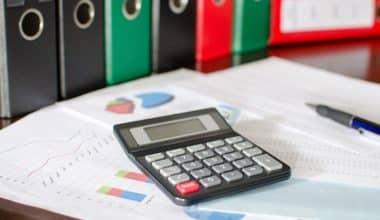Making choices based on data and study requires a competent analysis. You can win support for a certain concept, cause, or effort by giving an analysis. Any occupation requires excellent writing skills. Learn what an analysis is in this post, its example, and report, why using one in persuasive communications is crucial, and how to write an essay with it.
What Is an Analysis
Breaking anything down into its component elements helps us comprehend it better. This process is called analysis.
An analysis is created by doing extensive research on a subject. It entails conducting research and categorizing the findings into clear, comprehensible concepts. It gives a clear theory on the subject and evidence to back it up. Analysis can be used in a variety of contexts to offer various answers to an issue.
An analysis is crucial because it organizes and assesses data before arranging it into information that can be used in practical applications. For instance, a marketing research study assesses demographics, market size, customer behavior, and other factors in order to build a specific marketing plan.
Rules for composing analyses
To create a thoughtful and critical analysis, use the advice provided below:
#1. Be Exact.
It is essential that all of the data readily support your statements because there are many ways to interpret the evidence. Explain in one to two words how you personally feel each piece of evidence supports your claim. If the proof is convincing, give more details.
#2. Be Judicious.
Fair findings that take into consideration all the information should come from an in-depth inquiry. Consider the material carefully before employing strong arguments to support your position if it disagrees with your views. Employ language like “This evidence implies…” or “Many are in agreement that…” to keep your analysis critical and compelling.
#3. Go Over Very Detail.
Every piece of evidence is somewhat pertinent. Even if it conflicts with your argument, always analyze the evidence you utilize in your analysis. You can disprove a claim by offering evidence that partially opposes it.
#4. Make a Mind Map.
Before writing, it’s a good idea to jot down ideas and build an outline to help you organize and link your thoughts. Try to start with a large topic bubble when creating a mind map. Insert brief thoughts related to the theme around the edges of the smaller bubbles to connect them when there are obvious patterns or related concepts. Themes will begin to emerge as a result of linking thoughts. This might help with subject specialization and thesis development.
What Is an Analysis Example
Looking for an example of analysis, below are some of the examples to go with, for further details:
#1. Thinking
Finding concepts that accurately reflect a thing’s qualities and using them to convey meaning is the process of analysis.
Example of Thinking Analysis
Consumers think about the brand, color, style, material, and price while buying socks. These concepts make it simple to determine whether the products on the market meet consumer wants.
#2. Writing
The process of disassembling anything into its constituent parts and producing an opinion or objective assessment is called analysis.
Example of Writing Analysis
Based on factors including character performances, plot conflict resolution, structure, topic, scene dialog, and production value, a film reviewer constructs an evaluation of the work.
#3. Comparative analysis
Contrast and comparison are two concepts that involve comparing and contrasting items based on similarities.
Example of Comparative Analysis
Despite the fact that their income levels are comparable, a student examines the urban planning of two cities, one with a very good quality of life and the other with a very low quality of life.
#4.Financial analysis
Any examination of investments or money
Example Financial Example
A building business evaluates the return on investment of a potential resort condominium development.
#5.Critical Analysis
What it is is the evaluation process? A student assesses the urban design of a community by considering a number of variables, such as the neighborhood’s surroundings. In terms of efficacy and efficiency for community safety
What Is an Analysis Report
An analysis report is a piece of business writing that offers factual information to back up a claim. Businesses routinely produce analytical reports to solve issues, spot opportunities, or support decisions.
For example, the marketing division of a business might create an analysis report to present statistics demonstrating the benefits of the method if it wishes to apply a novel strategy. In analytical reports, data is graphically represented using charts and graphics. Research for these studies is conducted by business specialists, who then assemble their findings into a paper.
Several factors make an analysis report vital. They include:
#1. Enhanced Productivity:
Analysis report regularly gives you information on a problem or challenge the business is currently facing. The company’s overall productivity can be increased by utilizing this data to improve and streamline business processes.
#2. Improved Communication:
You can improve team collaboration by producing and sharing an analysis report. Each team member receives data analytics from the report, allowing them to intelligently discuss a problem, a query, or an opportunity.
#3. Collaboration:
Effective team communication is made possible by having a thorough analysis report. If you’re trying to solve a problem, you and your team members can use the information from the report to discuss potential solutions.
#4. Increased Adaptability:
By conducting analytical research, you could assist your team in becoming more adaptable while reacting to shifting market situations. If your data is accurate, you might utilize it to adjust the way your team works so you can respond to changes as they happen.
Analytical Report Kinds
While there are many additional reasons to use analytical reports, the following are some common types of reports you can create:
- Financial Analysis:
To learn more about the company’s finances, the financial team may conduct an analysis. To find out why the company is producing more or less money this quarter compared to previous quarters, for instance, an analytical report could be used.
- Operations analysis:
To enhance the operational performance of the company, managers may conduct an operations analysis. These analytical investigations frequently point out areas where the business might increase efficiency.
- Analysis of trends:
In order to outperform rivals, a company’s analysts may do research on current market trends to provide an analysis of trends. When creating a strategic analytical report, they consider consumer preferences, market trends, and new product advancements.
How to Write an Analysis
An analysis must adhere to a specific framework and include essential elements in order to write a compelling case. The following steps can help you how to write an analysis plan and compose your analysis well:
- Choose a line of argument
- Explicate your thesis.
- Write the introduction
- Write the Body Paragraphs.
- Include a conclusion
#1. Choose a Line of Argument
Identifying the argument you are making is the first step. You must narrow your focus in your analysis in order to make a concentrated argument. To ensure that the reader fully understands your thesis, your argument should adopt a forceful posture.
For example “Corporations should increase the options available to workers who wish to work from home.” This comment particularly mentions prospective work-from-home options and contains strong opinions.
#2. Explicate Your Thesis
You can start developing your thesis statement once you have your argument. A thesis statement is a single line that encapsulates all of the statements you make in the course of your investigation. The claims must fit within the parameters of your argument and be sufficiently precise. By making specific statements that you can support with facts in the body paragraphs of the analysis, the thesis advances the argument.
For example, “Corporations should create greater chances for remote work because it promotes productivity, supports a better work-life balance, and improves staff retention.”
#3. Write the Introduction
By stating the details and the order in which you will analyze them throughout the analysis, your introduction gives your reader a roadmap. In the opening few phrases, briefly introduce the subject before stating your point.
Example: “Work-from-home days are increasingly popular among businesses due to their many benefits.” According to studies, this is one of the employment benefits that both employers and employees value the most. More businesses ought to offer the option of working from home because it increases worker retention, productivity, and work-life balance.”
#4. Write The Body Paragraphs.
The beginning serves as a roadmap for the remainder of your research. Your thesis statement should be broken up into several parts, each of which should have its own body paragraph and supporting evidence. Each paragraph should address one argument. The topic phrase at the start of each paragraph should specify the specific argument you will address inside it. Be sure to cite reliable sources to back up every assertion you make. References should be from a reliable online journal, book, or statistics source. In order to ensure proper attribution, cite your sources.
#5. Include a Conclusion
The thesis statement should be updated, and a summary of your key points should be included in the conclusion. Explain the findings’ wider ramifications briefly and allay any remaining worries of your reader.
Example: “Research suggests that working from home decreases employee stress, promotes productivity, and enhances job satisfaction. As a result of their awareness of these advantages, numerous businesses have implemented more flexible work schedules. More businesses need to start taking the advantages of work-from-home days into account because employee contentment is at its lowest point in 20 years and workplace stress is at an all-time low.”
What Is an Analysis Essay
A piece of writing that provides a thorough study of a subject is known as an analysis essay. An analysis essay can cover a wide range of subjects, including philosophy, science, music, literature, politics, current events, and both recent and historical occurrences. In addition to appearing in periodicals, newspapers, scientific publications, and trade journals, analysis essays are frequently used in educational settings. A coherent and contextualized analytical essay will provide the reader with useful information.
Generic Analysis Essay Format and Structure
You can write your analysis essay in a variety of styles and forms. Essays on cause and effect examine the fundamental factors that led to one event and how those factors affected future events. In an analysis essay, two pieces of writing are contrasted, and their similarities and differences are examined (or elements within a single piece).
A “straightforward” analytical essay usually contains the required essay elements.
The standard essay components are usually present in a “straightforward” analytical essay.
- An interesting introduction that draws the reader in, gives context and states the main thesis of your analysis
- Body paragraphs that elaborate on the study conducted to support the thesis
- A brief restatement of your thesis should be included in the conclusion. You should also look ahead or beyond the topics, you covered in your paper, and you might even include a call to action or rhetorical question.
What Is an Analysis in Writing?
The process of disassembling anything into its constituent parts and producing an opinion or objective assessment is called analysis. In writing.
What Does Analysis Mean in Research?
An analysis is a process of evaluating research critically. Researchers consider a variety of factors while examining a source, such as the following:
- Showing information
- The primary argument of the author
- The proof the author employs
- Author’s credibility and supporting data
What Is the Main Purpose of Analysis?
An analysis is your chance to provide your reader with background information and an explanation of the evidence. In your analysis, you might tell the reader what the data means, why it matters, or how it ties to other ideas in your work. Remember that synthesis, which typically comes after analysis, are an expansion and more complicated form of analysis.
What Is Analysis and Its Types?
Mathematicians also look into continuous changes in analysis in addition to the notions of integration, differentiation, measure, limits, analytic functions, and infinite series. It is the methodical study of continuous real and complex-valued functions.
There are basically four different sorts of data analysis to be aware of evaluating descriptive data What took place? Analyzing the diagnostic information What caused it? How likely is it that something will occur in the future? What course of action would be best for me?
What Are the 3 Methods of Analysis?
descriptive analysis with a history-related focus. The diagnostic analysis seeks to identify the reasons why things happen. Predictive analysis can pinpoint trends that will manifest in the future using previous data.
Related Articles
- How to Write a Business Paper: A Step-by-Step Guide
- Proof of Claim: How to file proof of Claim in Bankruptcy
- What Are Analytical Skills? Examples and Tips
- The Best Custom Writing Services in 2023






